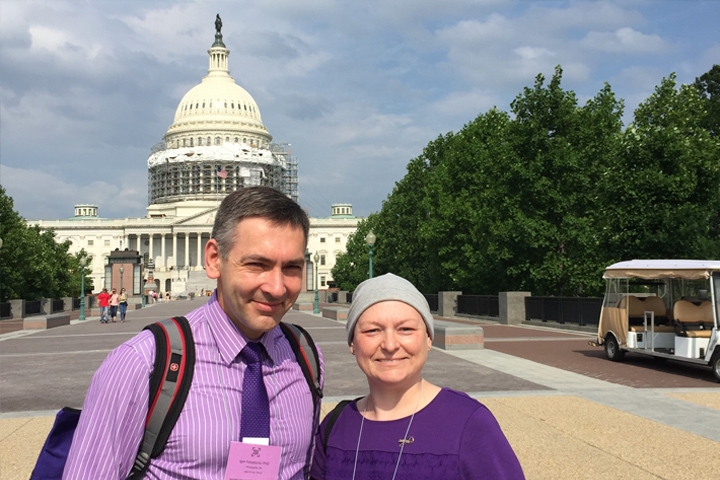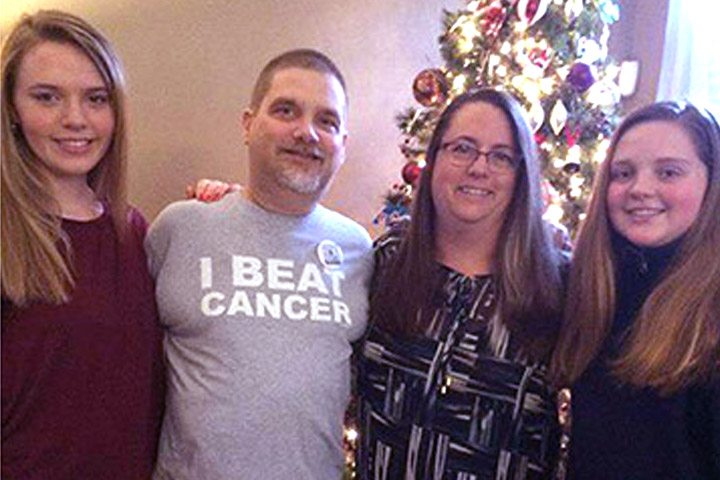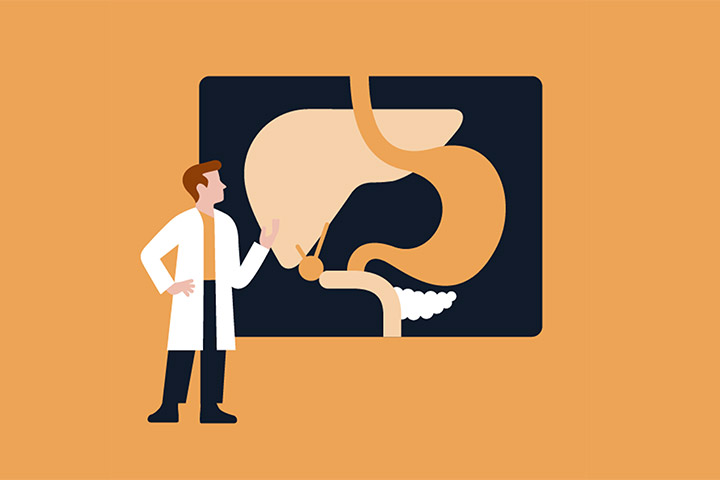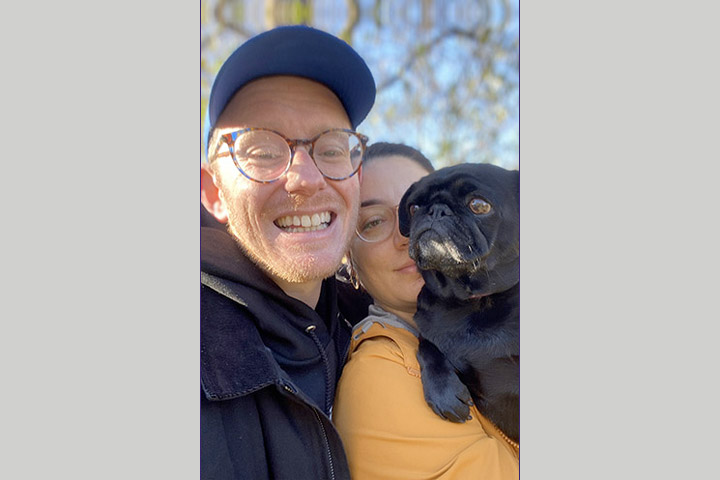Fighting to Win

- Radiation and chemotherapy to shrink tumor
- Surgery to remove the tumor
- More chemotherapy after surgery
- Clinical trial for recurrence
My life was going well in 2013. I was raising my six-year-old daughter and had recently become engaged to be married.
But in April I woke one morning with pain and discomfort on my left side. Assuming it was a result of sleeping in a bad position, I took pain medication and went to work. By lunch time, the pain was worse so I went to the emergency room.
The doctors ran some tests and performed a CT scan, where they noticed that the blood supply to my spleen had been cut off, causing an infarction, or death of the tissue. The doctors did not know what was causing the blood to be blocked so I was admitted to the hospital for testing. A suspicious spot was seen on my pancreas, so I had an endoscopic ultrasound (EUS) and biopsy, which confirmed the diagnosis. I was 38 and I had pancreatic cancer. I had never heard of pancreatic cancer but because my daughter was so young, I knew I had to fight this disease and win.
Treatment to Shrink My Tumor
My next step was to find the right doctors to help me in this fight. I made an appointment with Dr. Andreas Karachristos (now at Tampa General Hospital) a pancreatic surgeon at Fox Chase Cancer Center. He explained that the tumor was located on top of the artery to my liver, which meant that I could not have surgery right away. He introduced me to a radiation oncologist, Dr. Joshua Meyer, and a medical oncologist, Dr. Igor Astsaturov so we could come up with a treatment plan.
Surgery was still the goal, so we needed to shrink my tumor. My first treatment was a combination of radiation and chemotherapy with gemcitabine. After six weeks, the tumor had gotten smaller but it was still not small enough for surgery. So in July 2013, I began a more aggressive chemotherapy with FOLFIRINOX.
Reaching My Goal of Surgery
Despite the side effects I was able to work during treatment. Finally, in November 2013, I was told that my tumor had shrunk enough for surgery! I never thought I would be excited to have surgery, but I wanted that tumor out of my body. I took a six-week break from treatment to build my strength, and on January 3, 2014 the tumor was taken out of me, along with the body and tail of my pancreas, my spleen, and the main artery that supplies blood to the liver, spleen and stomach. It was a long surgery.
After I recovered, Dr. Astsaturov recommended another six months of chemotherapy with gemcitabine to prevent recurrence. I finally finished treatment in August 2014. I went back to work and to my regular activities and even became involved with the Pancreatic Cancer Action Network.
Recurrence Leads to a Clinical Trial
I thought I was doing well but in March 2016 I found out that the cancer had returned, in one of my fallopian tubes. This time Dr. Astsaturov found a clinical trial for me. I am taking ipafricept along with gemcitabine and Abraxane.
My motto is never give up. I try to live my life to the fullest every day.
Melissa lost her battle with pancreatic cancer after five and half years. Her willingness to pursue new treatment options will help those who come after her. We offer our deepest sympathy to her family.





